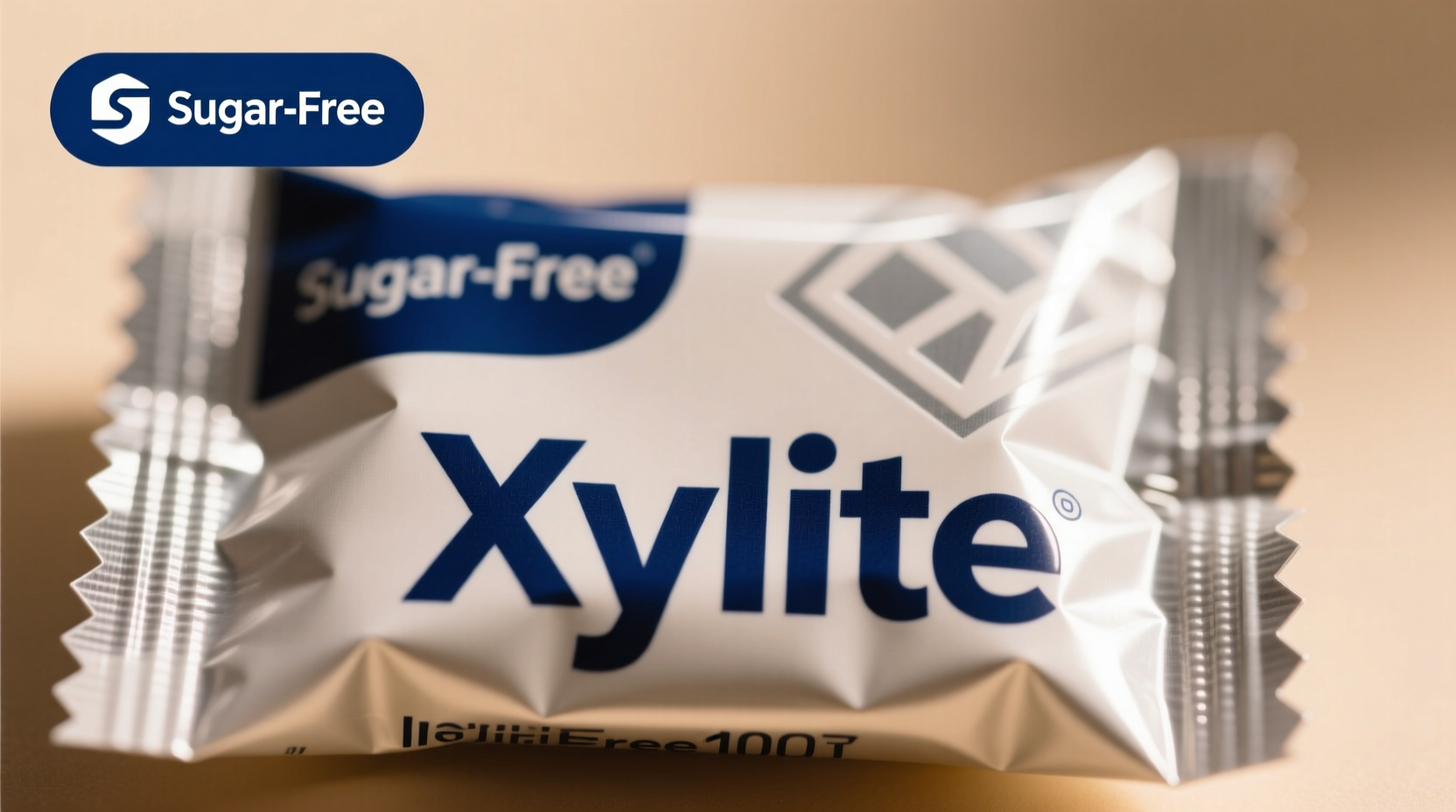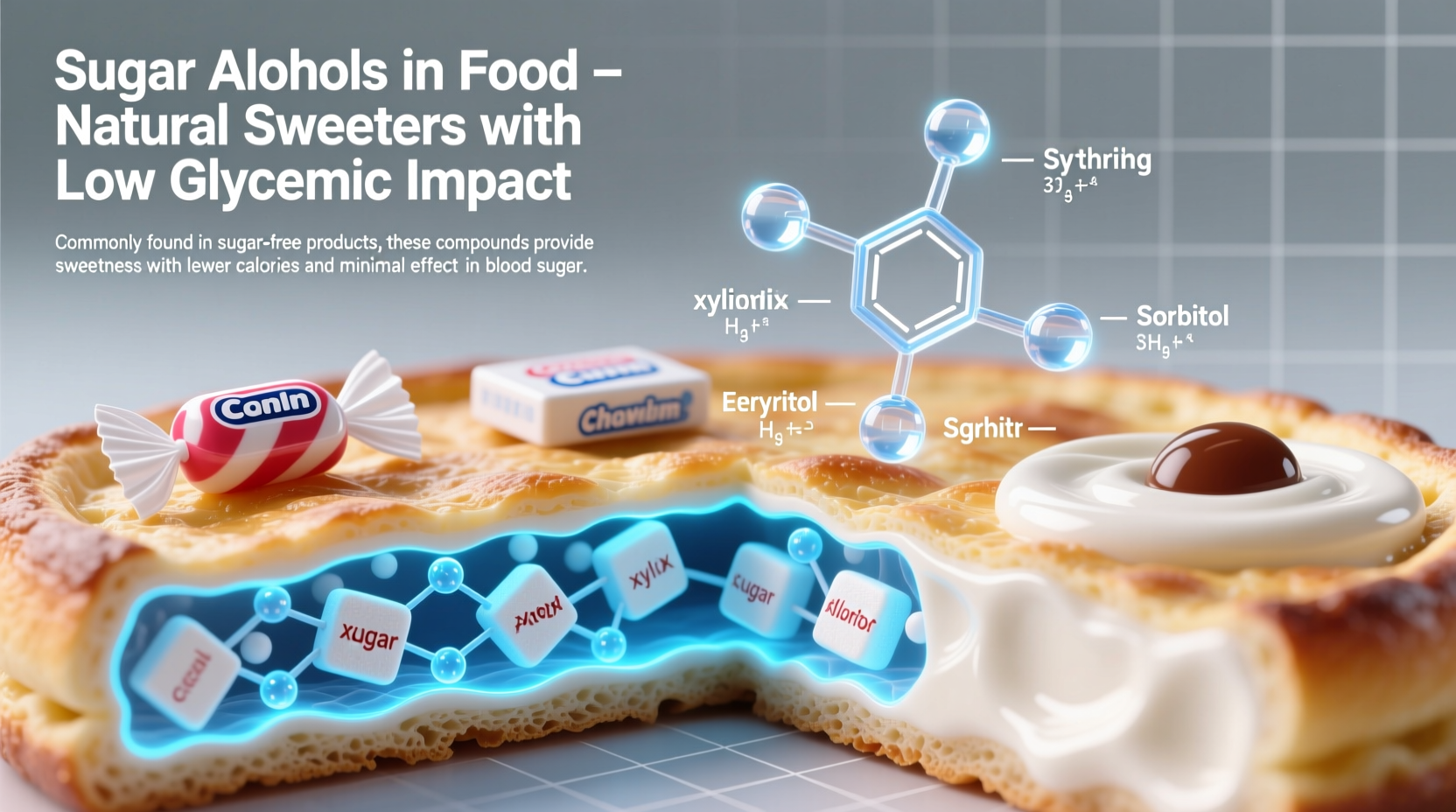Confused about sugar alcohols in your food? You're not alone. Many consumers see terms like xylitol, erythritol, or sorbitol on ingredient labels and wonder: What exactly is sugar alcohol in food, and is it safe? This comprehensive guide cuts through the confusion with science-backed facts you can trust. We'll explain what sugar alcohols really are (spoiler: they're not alcoholic!), how they affect your body, which foods contain them, and practical tips for making informed choices.
Understanding Sugar Alcohols: Beyond the Misleading Name
Despite the "alcohol" in their name, sugar alcohols contain no ethanol—the component that makes alcoholic beverages intoxicating. Technically known as polyols, these compounds occur naturally in some fruits and vegetables but are primarily manufactured for commercial food production. They're created through a chemical process that transforms sugars or starches into hybrid molecules sharing properties of both sugars and alcohols.
Food manufacturers use sugar alcohols as sugar substitutes because they deliver 25-100% of sugar's sweetness while providing fewer calories (typically 1.5-3 calories per gram compared to sugar's 4 calories). Their molecular structure allows them to stimulate sweet taste receptors without fully breaking down during digestion—making them particularly valuable for sugar-free and reduced-calorie products.
Common Sugar Alcohols in Your Pantry
Not all sugar alcohols are created equal. Each type has unique properties affecting sweetness level, caloric content, and digestive tolerance. Here's what you need to know about the most prevalent varieties:
| Sugar Alcohol | Sweetness (vs. Sugar) | Calories/Gram | Glycemic Index | Common Food Applications |
|---|---|---|---|---|
| Erythritol | 60-80% | 0.2 | 0 | Sugar-free chocolates, beverages, baked goods |
| Xylitol | 100% | 2.4 | 12 | Gum, mints, oral care products |
| Sorbitol | 50-60% | 2.6 | 9 | Sugar-free candies, frozen desserts |
| Maltitol | 75-90% | 2.1 | 35 | "Sugar-free" chocolates, ice cream |
This comparison reveals why erythritol has gained popularity in keto and diabetic products—it delivers noticeable sweetness with minimal caloric impact and virtually no effect on blood sugar levels. Meanwhile, maltitol's higher glycemic index makes it less suitable for strict blood sugar management despite its sugar-like texture.

Where You'll Find Sugar Alcohols Hiding in Plain Sight
Sugar alcohols have quietly infiltrated our food supply over the past three decades. The FDA approved xylitol for food use in 1963, but widespread adoption didn't occur until the 1990s when sugar-free products gained popularity. Today, they're ubiquitous in:
- Dental care products: Xylitol in gum reduces cavity-causing bacteria (American Dental Association, 2022)
- "Sugar-free" labeled items: Candies, chocolates, and baked goods often use maltitol or sorbitol
- Diabetic foods: Many "sugar-free" diabetic snacks rely on erythritol blends
- Processed foods: Salad dressings, ketchup, and even some protein bars contain hidden sugar alcohols
The evolution of sugar alcohol usage reflects changing consumer demands. Initially popularized for diabetic products in the 1980s, they've expanded into mainstream "reduced sugar" items as low-carb diets gained traction. Current food labeling regulations require manufacturers to list sugar alcohols in the nutrition facts panel when present in significant amounts.
Health Implications: Benefits and Digestive Reality Check
Sugar alcohols offer genuine benefits but come with important caveats. Their partial digestion means they provide fewer calories and have less impact on blood glucose—making them valuable tools for diabetes management. The American Diabetes Association acknowledges their role in blood sugar control while noting individual tolerance varies significantly.
However, that incomplete digestion is a double-edged sword. When sugar alcohols reach your large intestine undigested, gut bacteria ferment them, potentially causing:
- Bloating and gas
- Abdominal cramping
- Diarrhea (especially with sorbitol and maltitol)
Tolerance thresholds differ by individual and specific sugar alcohol. Most people can comfortably consume 10-15g of erythritol daily, while just 5g of maltitol may trigger symptoms in sensitive individuals. Children and those with IBS typically experience stronger reactions.
Practical Guidance for Smart Consumption
Want to navigate sugar alcohols wisely? Follow these evidence-based strategies:
- Read labels carefully: Check both ingredient lists and nutrition panels for sugar alcohols
- Start low, go slow: Introduce new sugar-free products gradually to assess tolerance
- Know your limits: Keep a food diary to identify which types and amounts trigger symptoms
- Consider dental benefits: Xylitol-containing gum may support oral health when used appropriately
- Avoid certain types when traveling: Steer clear of sorbitol and maltitol before long trips
Special populations should exercise particular caution. The FDA advises against giving xylitol-containing products to pets (it's toxic to dogs), and pregnant women should consult healthcare providers about consumption levels. For most adults, moderate consumption of erythritol or xylitol poses minimal risk, but those with digestive disorders may need stricter limits.
When Sugar Alcohols Make Sense (and When They Don't)
Not every situation calls for sugar alcohols. Consider these context boundaries:
- Recommended for: Diabetes management, dental health support, calorie-controlled diets
- Use cautiously with: IBS, inflammatory bowel disease, childhood nutrition
- Generally avoid: Before athletic performance (may cause GI distress), in large quantities
Remember that "sugar-free" doesn't automatically mean "healthy." Many sugar alcohol-sweetened products still contain significant fats, artificial ingredients, or refined carbohydrates. The most healthful approach combines moderate use of sugar alcohols with whole-food nutrition principles.
Frequently Asked Questions About Sugar Alcohols
Are sugar alcohols safe for daily consumption?
Most sugar alcohols are generally recognized as safe (GRAS) by the FDA for moderate daily consumption. Erythritol appears safest with most adults tolerating up to 0.65g per pound of body weight daily. Xylitol is safe up to 40-50g daily for adults, though digestive symptoms may occur at lower doses. Always introduce gradually and monitor your body's response.
Do sugar alcohols affect blood sugar levels?
Sugar alcohols have minimal impact on blood glucose compared to regular sugar. Erythritol has virtually no effect (glycemic index of 0), while others range from 3-35 on the glycemic index scale (sugar is 65). The American Diabetes Association recommends counting half the grams of most sugar alcohols toward total carbohydrates, except erythritol which can be fully subtracted.
Why do sugar alcohols cause digestive issues?
Sugar alcohols cause digestive issues because they're only partially absorbed in the small intestine. The unabsorbed portion reaches the large intestine where gut bacteria ferment them, producing gas and drawing water into the colon. This osmotic effect leads to bloating, cramping, and diarrhea—particularly with sorbitol and maltitol which have lower absorption rates than erythritol.
Can I use sugar alcohols for baking?
Yes, but with important considerations. Sugar alcohols behave differently than sugar in baking. Erythritol can crystallize when cooled, while xylitol provides similar browning but lacks sugar's moisture-retaining properties. Most sugar-free baking requires recipe adjustments—often combining erythritol with monk fruit or allulose, adding extra binding agents, and adjusting liquid content. Never use maltitol for yeast-based recipes as it inhibits fermentation.











 浙公网安备
33010002000092号
浙公网安备
33010002000092号 浙B2-20120091-4
浙B2-20120091-4